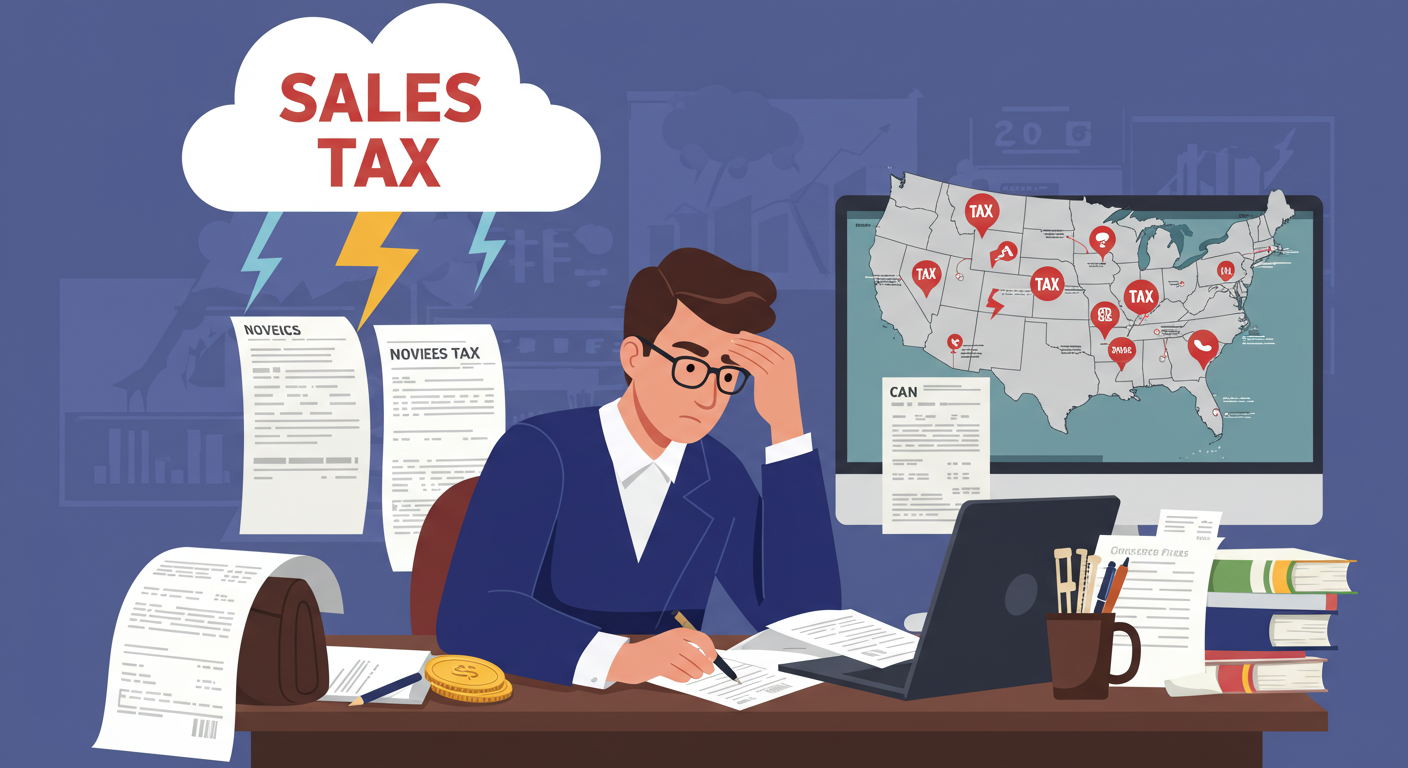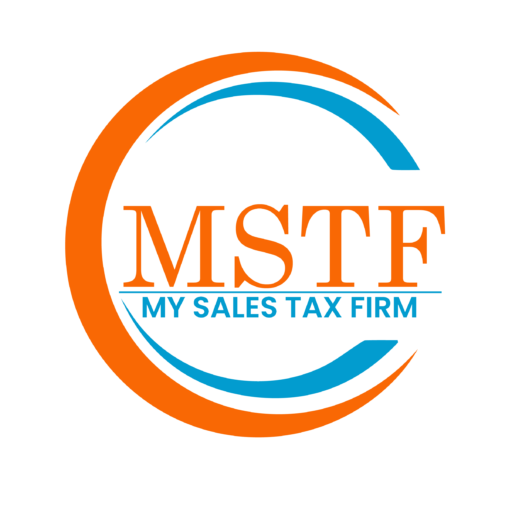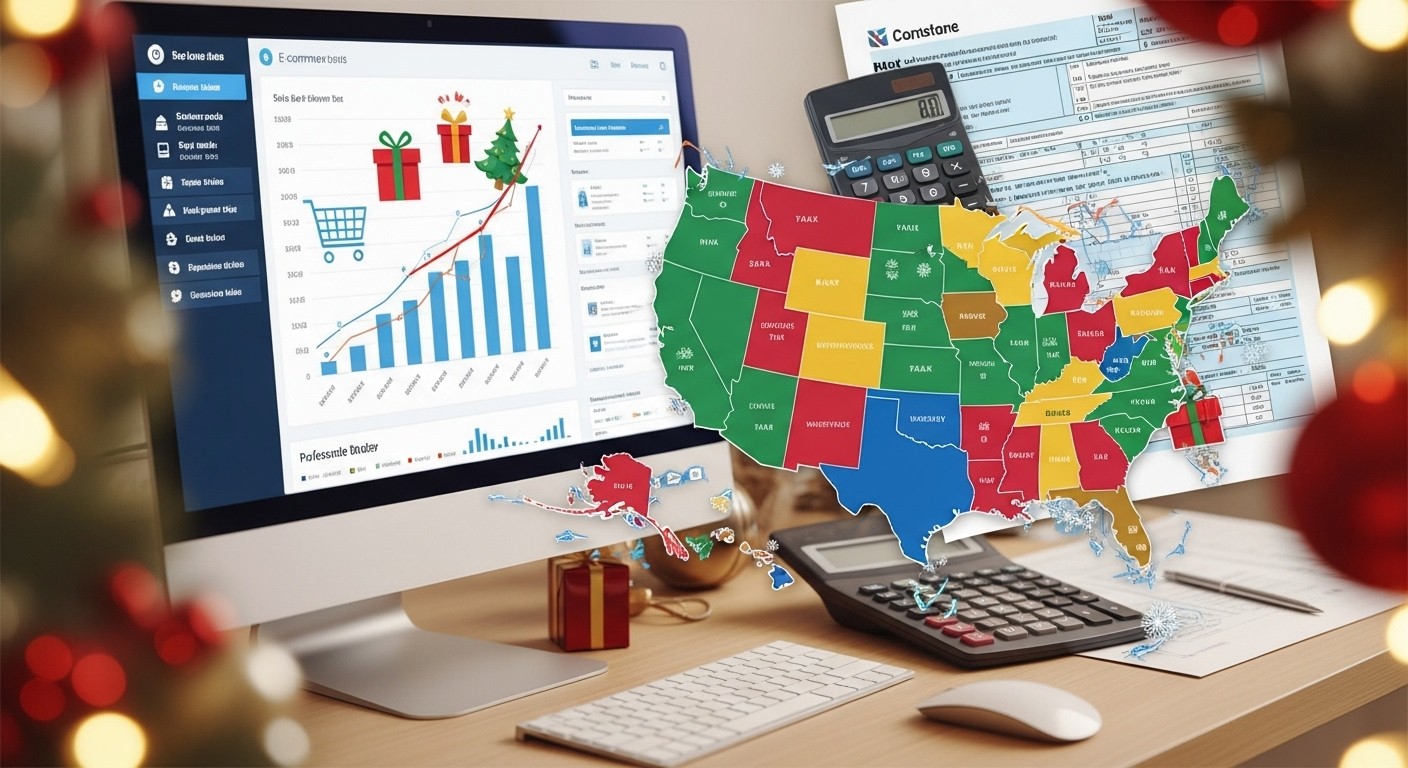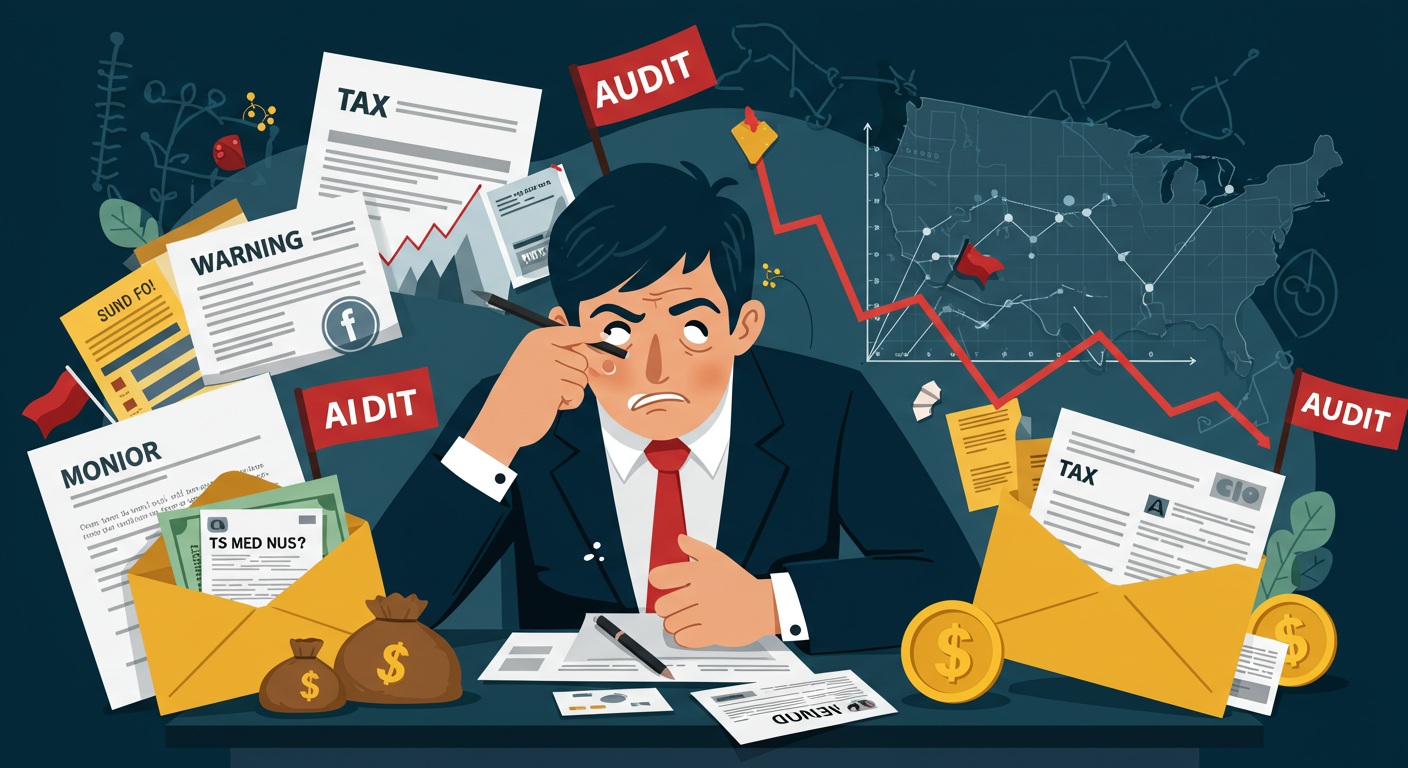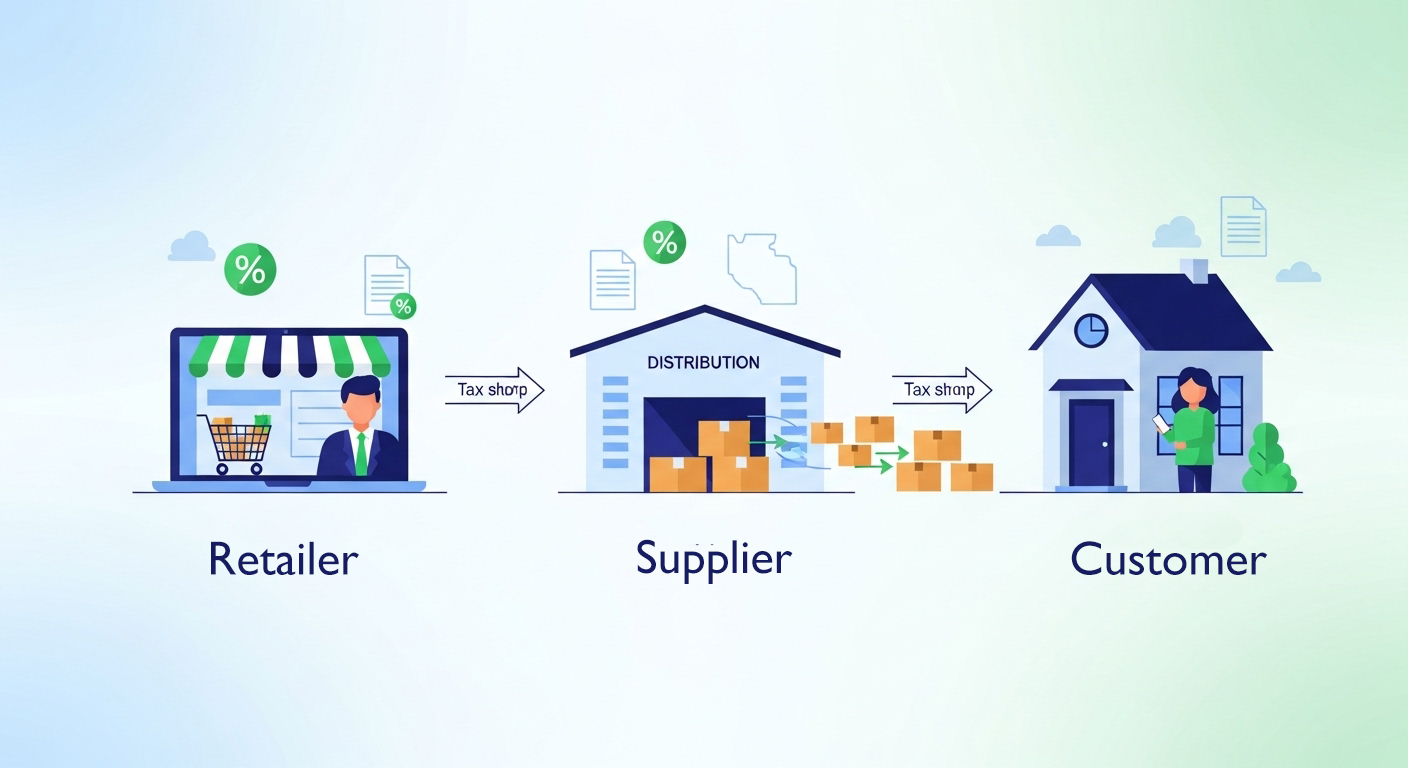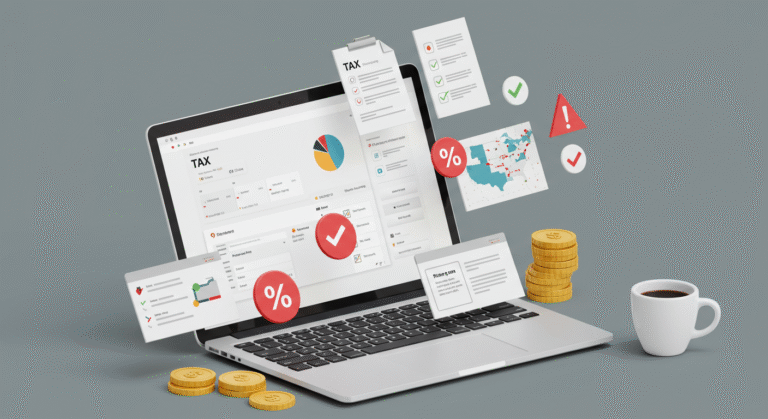Introduction
If you’re a small business owner or run an online store, the phrase “sales tax nexus” might sound like a foreign language. But don’t worry, you’re not alone. Understanding sales tax rules in the U.S. is tricky. Each state has its own laws. And once your business hits certain thresholds, you’re on the hook for collecting and remitting sales tax. This guide breaks down the basics of sales tax nexus in plain English. We’ll help you figure out what it is, how it works, and whether it applies to your business.
Understanding sales tax nexus is crucial for staying compliant and avoiding costly penalties. We’ll also look at the challenges and tradeoffs business owners face when managing sales tax compliance, especially when selling across multiple states.
Let’s dive into the world of sales tax nexus and see what it really means for your business.
What Is Sales Tax Nexus?
“Sales tax nexus” is the connection between a business and a state that requires the business to collect and remit sales tax in that state. If your business has nexus in a state, you have to follow that state’s sales tax laws.
Here’s a simple nexus definition:
Nexus is a legal term that means a business has a significant presence or connection in a state. That connection obligates the business to collect and remit sales tax there.
There are two main types of sales tax nexus:
- Physical nexus: This occurs when your business has a physical presence in a state, like a store, office, warehouse, or employees.
- Economic nexus: This is based on sales activity. If you sell over a certain dollar amount or number of transactions into a state, you create nexus there — even if you have no physical presence.
Why Sales Tax Nexus Matters for Your Business
If you ignore sales tax nexus, you could face audits, fines, and back taxes. But complying can also be overwhelming, especially for ecommerce sellers.
Here are the challenges:
- Every state is different: States have their own nexus rules and thresholds. What creates nexus in one state might not in another.
- Economic nexus thresholds: Some states set thresholds as low as $100,000 in sales or 200 transactions per year.
- Managing multi-state compliance: If you sell nationwide, you’re likely to have nexus in multiple states. That means multiple filings and registrations.
Types of Sales Tax Nexus
Let’s take a deeper look at the most common types of sales tax nexus:
1. Physical Nexus
This is the oldest and most straightforward form of nexus.
You create physical nexus if you:
- Have a storefront or office in a state.
- Have employees working in that state.
- Own or rent property, including warehouses or inventory storage.
- Attend trade shows or temporarily operate in a state.
This is often referred to as the physical presence rule, which was the main standard before the 2018 Wayfair decision.
2. Economic Nexus
The Supreme Court’s South Dakota v. Wayfair, Inc. decision changed the game. States can now require businesses to collect sales tax based on sales activity alone.
Economic nexus triggers include:
- Exceeding a certain number of transactions (usually 200/year).
- Reaching a specific sales amount (commonly $100,000/year).
Each state has its own economic nexus thresholds, so it’s important to check each one where you sell.
3. Affiliate Nexus
This occurs when your business has relationships with affiliates or partners in a state that help you make sales there.
Common examples:
- Using marketing affiliates who promote your products.
- Partnering with local businesses to drive traffic or sales.
4. Click-Through Nexus
Some states use this rule for online sellers who benefit from referrals through links.
How it works:
- If a local website refers buyers to your online store and you pay them commissions, you may create nexus in that state.
5. Marketplace Nexus
If you sell through platforms like Amazon, Etsy, or Walmart Marketplace, some states treat the marketplace facilitator as the responsible party.
But:
- You may still need to register for sales tax in those states.
- Sales tax compliance still falls on you in certain cases.
How Does Nexus Work in Different States?
Nexus rules vary wildly. Here’s what you need to know:
- Some states are aggressive: California and New York actively pursue out-of-state sellers.
- Others are lenient: Some states have higher economic nexus thresholds.
- Filing requirements differ: Frequency, forms, and deadlines vary.
Nexus rules by state can be complex, so it’s smart to:
- Review each state’s tax authority website.
- Use a tool like Avalara or TaxJar.
- Consult a sales tax professional.
What Triggers Nexus for Online Sellers?
If you run an ecommerce store, you likely have remote seller nexus.
Remote sellers may create nexus by:
- Making sales to customers in other states.
- Using fulfillment centers like Amazon FBA.
- Exceeding economic nexus thresholds.
So, do online businesses pay sales tax? Yes — if you meet the state’s nexus requirements.
Ask yourself:
- “Do I have sales tax nexus in this state?”
- “Am I liable for sales tax nexus based on my business activity?”
If yes, you must:
- Register for sales tax in that state.
- Collect and remit the right amount.
How to Stay Compliant with Sales Tax Nexus
Managing sales tax compliance takes work, but it’s essential.
Here are the steps:
1. Determine Your Nexus Footprint
- Review where you have physical presence or cross economic thresholds.
- Consider inventory, employees, and third-party activity.
2. Register with Each State
3. Collect the Right Tax
- Use tax automation software to calculate rates.
- Factor in state, county, and local rates.
4. File and Remit Taxes on Time
- Follow state deadlines.
- File zero returns even if you had no sales.
5. Monitor Changes
- State laws change often.
- Stay updated to avoid surprises.
Tradeoffs and Challenges of Managing Nexus
Staying compliant can be costly. But ignoring it is riskier.
The tradeoffs include:
- Time vs. accuracy: Manual tracking is time-consuming. Automation costs money but ensures accuracy.
- Compliance vs. profitability: Collecting and remitting taxes reduces margin, but penalties hurt more.
- Risk vs. growth: Selling in more states grows revenue but increases tax liability.
Common challenges:
- Keeping up with ever-changing state sales tax laws.
- Understanding use tax obligations.
- Figuring out who is responsible: you or a marketplace facilitator?
Conclusion
Sales tax nexus can seem like a maze. But once you understand what triggers it and how it works, it’s easier to manage. Whether you’re running a small local business or an ecommerce store selling across the U.S., knowing your tax nexus responsibilities is essential.
Key takeaways:
- Nexus means a connection that obligates you to collect sales tax.
- There are many kinds of nexus, including economic, physical, and remote seller nexus.
- You need to stay compliant in each state where you meet the criteria.
Ready to get compliant? Don’t wait for an audit. Book a free consultation with My Sales Tax Firm.
